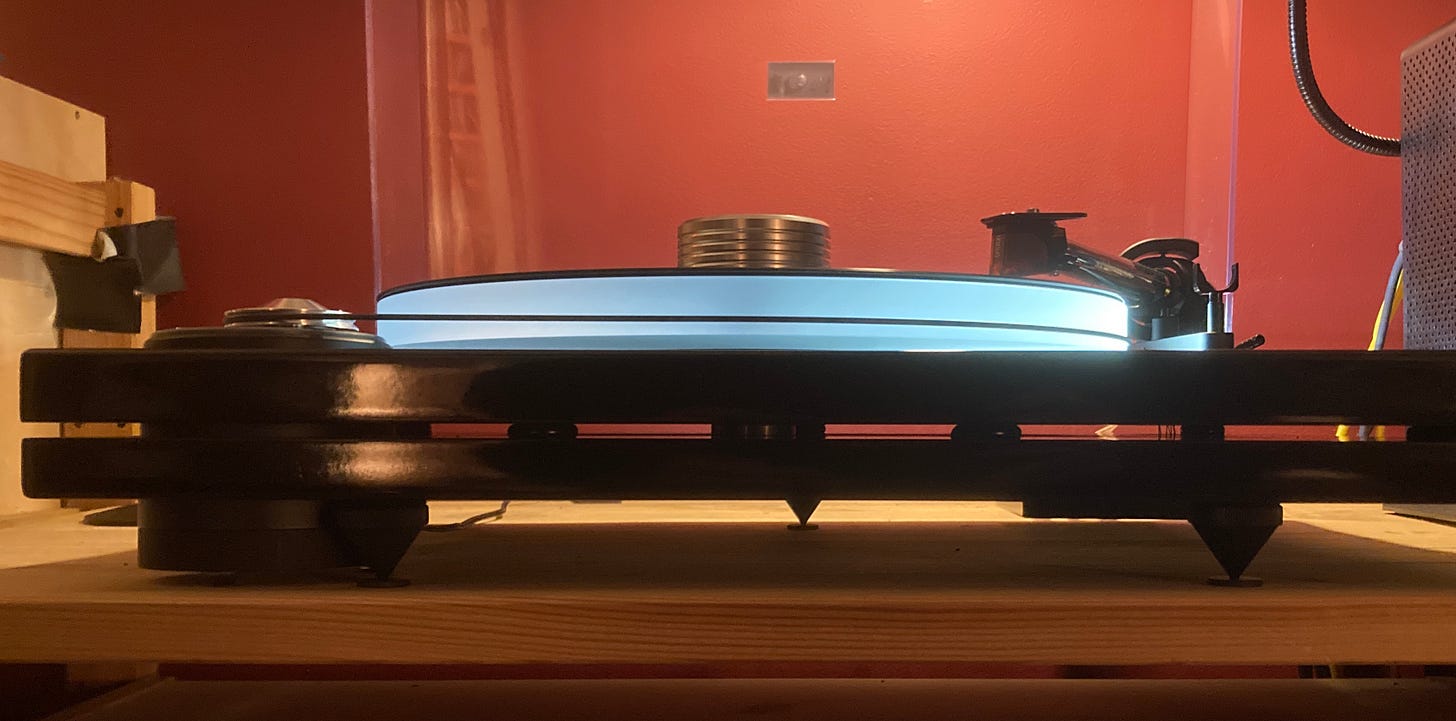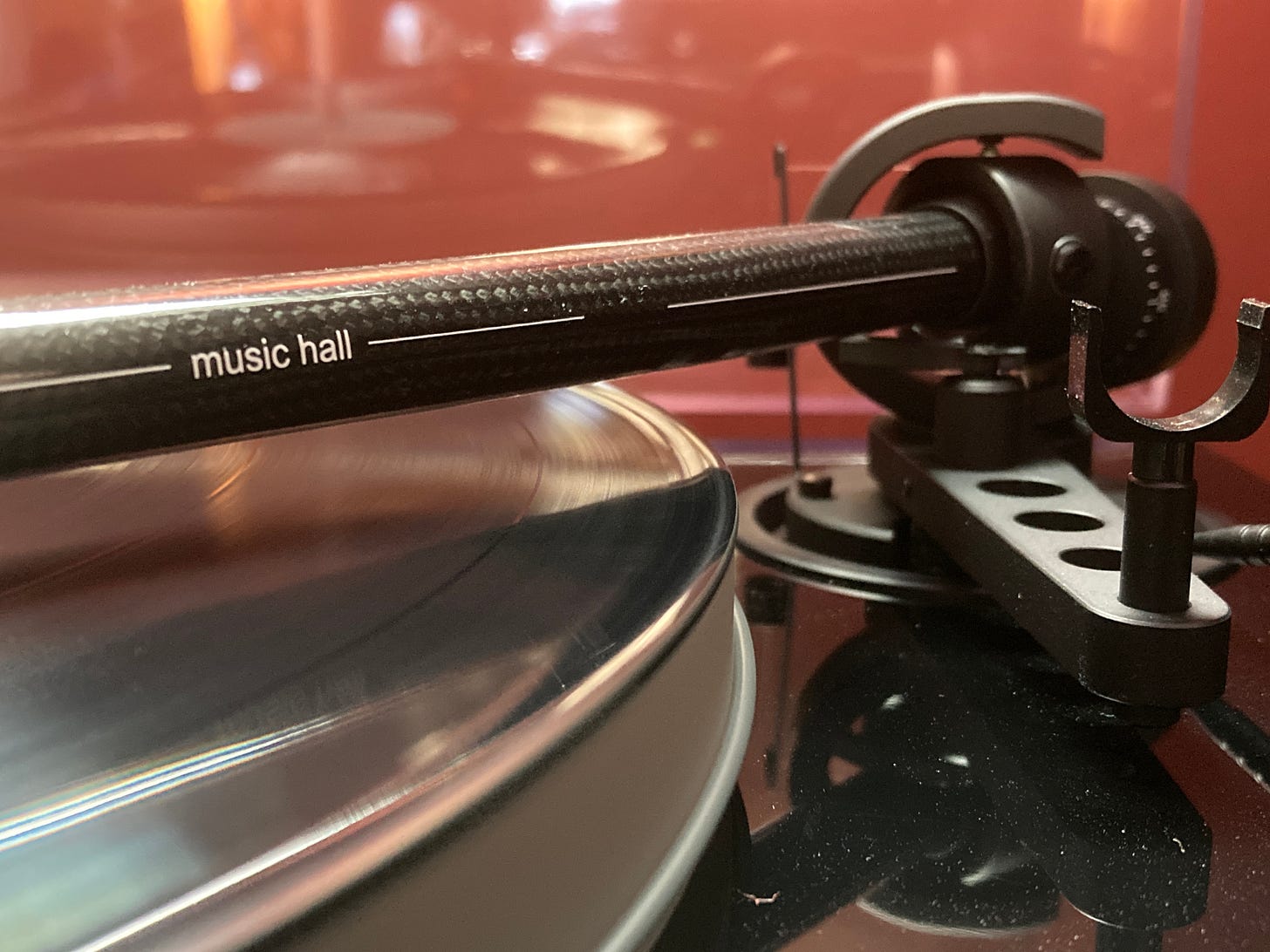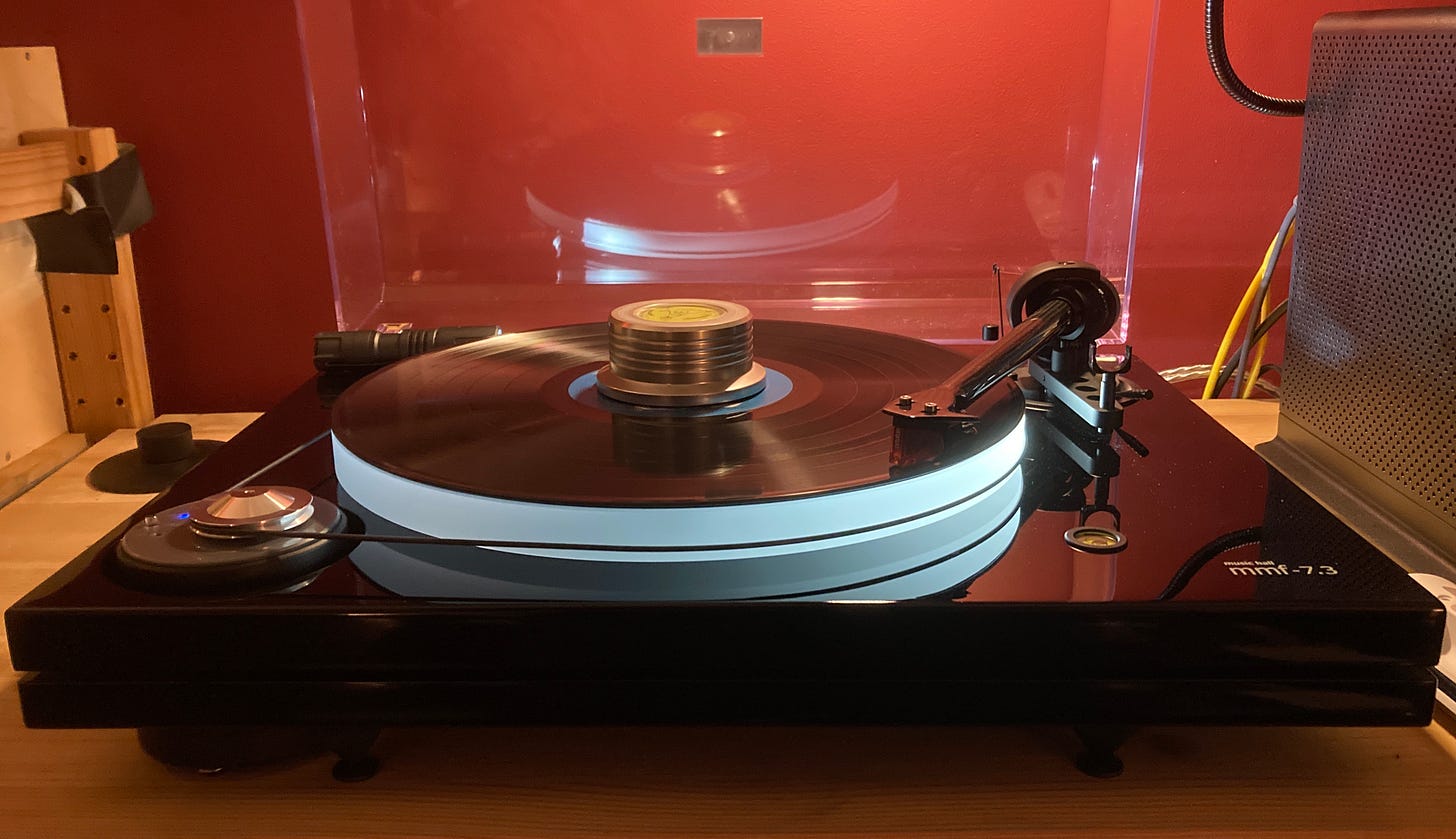
In most audio journeys, certainly in mine, the turntable is the most mysterious part of the deal. Records stir some listeners to rapture, others to controversy and confusion. Everybody wants to know if vinyl sounds better than digital streams or CDs, and even that simple question is packed with complications. The short answer is that vinyl can and should, but it often doesn’t. Records are physical objects and the process of extracting the music and delivering it to your amplifier is mechanical and electrical, more like a car engine than a computer. Some precision engineering is required. Getting exquisite sound out of a turntable and maintaining a vinyl collection is a commitment. But what I think I’ve learned is that while digital offers a more consistent musical experience, vinyl offers more uncertainty, but unambiguously higher highs when all is right. For years, I’ve been trying to understand how that works and what a wise investment in LP listening looks like. The effort’s been worth it. If high fidelity music is important, and it is, then turntables give us quasi-magical powers. When they’re good, they lift us out of our digitally fragmented time and deliver an at-home musical experience like nothing else.
Recently I took this investigation out of the abstract and went for it, acquiring a seriously dreamy turntable. My dream, that is, which is to say, audiophile quality but not gimmicky or extravagant. I’ll say a few things about its sound and performance and then get into some of the details of how I discovered and chose this particular unit to be my lifetime record player.
Most of what I hear is on high resolution streaming, which makes a pretty impressive baseline of sound quality, but in direct comparison, music on this new player fills the room with more sonic momentum and moves with more ease. The best analogy I can come up with is that if streaming is like a glossy giclée print with great resolution and color, vinyl on my new turntable is a pressed ink lithograph on fine paper. Records come with a certain fine-grained distortion of the pure, noiseless recording, but as my pal Doyle Davis of Grimey’s says, it’s a particular distortion that’s inexplicably pleasing to the human ear. Vinyl sounds more continuous, more river-like and more resonant. It’s juicer and weightier. So yes, it sounds better!
This beautiful new machine is inviting me to listen again and anew to every record I’ve collected, because it reveals new details and dynamics. Drum sets come through as individual drums, each with its own timbre and pitch. Pianos are round with the right attack and decay. An upright bass feels like it’s made of old wood, as it would in the room. Voices can sound uncanny, because the subtlest overtones and breath are preserved in the grooves.
Model numbers can be bewildering in hi-fi, but there’s no escaping them in building a system, so please meet my Music Hall mmf 7.3. Music Hall is an American company founded by a snarky Scotsman who worked out a design philosophy and a manufacturing operation in the Czech Republic. Roy Hall is entertaining as hell in interviews and he’s known for feuding with reviewers in the press and for answering his own tech support and customer service emails. I got one back from him when I asked a question about using a record weight! His turntables have been on the market since 1998, so they’re not a venerable old line. Rather, they’re a modern solution to an old problem characterized by design and value. Their words: “music hall has developed a cohesive and logical range of turntables. All are designed to extract a musical and satisfying presentation from that fabulous medium we call vinyl.”
It’s worth noting what I traded out for the Music Hall upgrade, because there are factors in the story that you’ll have to consider when buying your own player. I said farewell to a 1980s era Denon fully-automatic, direct drive DP-47F. It was a mid-tier, nice sounding, feature-packed machine with a good reputation among listeners (see link). On the other hand, it’s almost impossible to service and has a lot of moving parts and electronics that I knew couldn’t be working right after 20 years with me, not counting its prior owners. The main thing to know is the difference between an automatic (the Denon) and a fully manual model (the Music Hall). Automatics have little motors and gears that deliver the tonearm and needle to the start of the record with a START button and then lift and return it at the end of a record. Why would I spend four to five times as much for a turntable without that feature? After all, now I have to get up every time a record’s over and return the tonearm to its rest (there is a little lifter lever to make this easy). And the answer is that my preference is for every dollar to go into the essential elements of getting the sound right - the motor, the plinth (body), the tonearm and the stylus cartridge. This device has one job - to create a stable, beautifully balanced interface between the record groove and the stylus. Music Hall’s approach is to focus on that alone.
The means of that job are the last thing I’ll talk about, but they’re not incidental to my satisfaction with the mmf 7.3, because it channels natural forces and tools, including friction, mechanics, electromagnetism, balance, mass, materials, resonance and leverage. The tone arm, a wonder to look at and handle, is made of carbon fibre and thus extremely lightweight and immune to resonance. It balances with a counterweight on a fulcrum made of precision steel bearings. The motor is completely isolated from the plinth so the motor vibrations don’t transmit through the needle or the tone arm. Since I don’t collect old watches, this is probably the most thoughtfully designed machine I own, and that’s highly satisfying. While I’m not an engineer, I have a kind of priestly admiration for them. I can feel the logic behind every element, and there’s nothing extraneous. Oh, and Music Hall turntables all have a dust cover, which sounds obvious, but weirdly, high end turntables mostly don’t. So again, this is about practical thought and usability, not showing off.
Finally, I like to dwell on the fact that the Music Hall is the only entertainment device I own, besides my musical instruments, that doesn’t have an integrated circuit of any kind. The stylus propagates a tiny electrical impulse that’s carried by wires to the pre-amplifier and amp, where it’s boosted several hundred times to a force that can drive my speakers. It’s a pure, pre-digital, non-digital experience, and I think our souls, as well as our ears, are keen to feel the difference.
I’d love to hear your questions about turntables and vinyl. Ask at chavighurst@gmail.com or on Twitter at @chavighurst.




